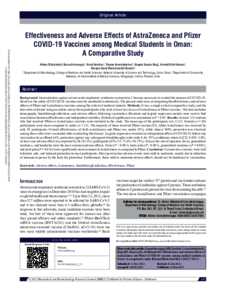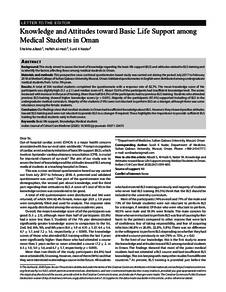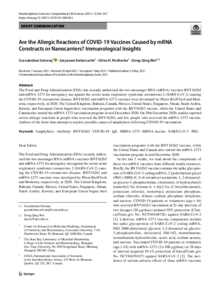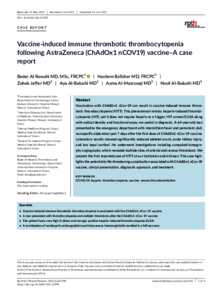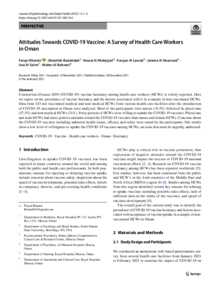Document
Effectiveness and adverse effects of astrazeneca and pfizer Covid-19 vaccines among medical students in Oman : a comparative study.
Identifier
DOI: 10.4103/bbrj.bbrj_9_23
Source
Biomedical and Biotechnology Research Journal. v. 7, 1, p. 101-105
Contributors
Nambiar, Vinod., Author
Aravindakshan, Rajeev., Author
Baig, Muqeet Fauzan., Author
Hassan, Ahmed Kifah., Author
Country
India
City
Mumbai
Publisher
Wolters Kluwer Medknow Publications.
Gregorian
2023-01-01
Language
English
English abstract
Background: Immunization against severe acute respiratory syndrome coronavirus 2 became necessary to control the menace of COVID-19. However, the safety of COVID-19 vaccines must be monitored continuously. The present study aims at comparing the effectiveness and adverse effects of Pfizer and AstraZeneca vaccines among the cohort of medical students. Methods: It was a single-cohort comparative study, and the data were collected using an online survey from participants who took at least two doses of AstraZeneca or Pfizer vaccines. The data included demography, breakthrough infections, and adverse effects following vaccination. Bivariate and logistic regression models were used to find associations between effectiveness and independent variables. Statistical significance was considered at P 0.05. Results: In total, 115 students who had received Pfizer or AstraZeneca vaccines were included in the study. The mean age of the participants was 21.52. Female (n = 90) participants were more compared to males (n = 25). The majority of them received Pfizer vaccine (95), while AstraZeneca was received by only 20 participants. Overall effectiveness of both AstraZeneca and Pfizer was nearly 85%, while almost 100% protection was observed among those who were vaccinated after contracting the disease. Logistic regression revealed an independent effect of COVID-19 before any vaccination dose offered 66% protection against any subsequent breakthroughs (odds ratio 0.44, 95% confidence interval [CI]: 0.095-2.08). At least one adverse effect was reported by 96 (83.5%) participants (95% CI: 75.4%-89.75%). Pain at the site of injection, fever, generalized weakness, and headache were the most common adverse effects. Fever (P 0.001), body ache (P 0.001), generalized weakness (P = 0.002), and joint pain (P = 0.014) were significantly more common in AstraZeneca as compared to Pfizer. Conclusion: Coronavirus vaccines were well tolerated, safe, and induced protection in most participants. Most postvaccine adverse events were mild to moderate, mainly due to induction of immune response by the body for protection. Furthermore, these mild to moderate adverse effects should not be hindrance to vaccination.
ISSN
2588-9834
Category
Journal articles

